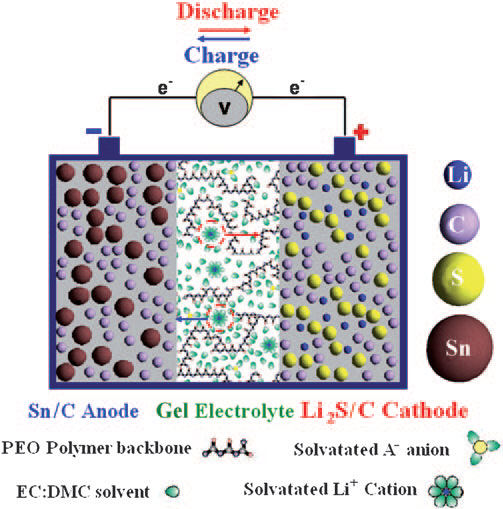Lithium Sulphur Batteries? Well hopefully yes. In short this means 3 times the amount of power for the same weight! Thats right! we could have the same power being produced by batteries that are 1/3 of the weight in the near future. I know we have heard all this before but..... read on
Jan 12/2015 --- Lithium Sulfur Batteries

An ultra-thin nanomaterial is at the heart of a major breakthrough by Waterloo scientists who are in a global race to invent a cheaper, lighter and more powerful rechargeable battery for electric vehicles.
Chemistry Professor Linda Nazar and her research team in the Faculty of Science at the University of Waterloo have announced a breakthrough in lithium-sulphur battery technology in a recent issue of Nature Communications.
Their discovery of a material that maintains a rechargable sulphur cathode helps to overcome a primary hurdle to building a lithium-sulphur (Li-S) battery. Such a battery can theoretically power an electric car three times further than current lithium-ion batteries for the same weight -- at much lower cost.
"This is a major step forward and brings the lithim-sulphur battery one step closer to reality," said Nazar.
Nazar's group is best known for their 2009 Nature Materials paper demonstrating the feasibility of a Li-S battery using nanomaterials. In theory, sulphur can provide a competitive cathode material to lithium cobalt oxide in current lithium-ion cells. Sulphur as a battery material is extremely abundant, relatively light, and very cheap.
Unfortunately, the sulphur cathode exhausts itself after only a few cycles because the sulphur dissolves into the electrolyte solution as it's reduced by incoming electrons to form polysulphides.
Nazar's group originally thought that porous carbons or graphenes could stabilize the polysulphides by physically trapping them. But in an unexpected twist, they discovered metal oxides could be the key. Their initial work on a metallic titanium oxide was published earlier in August in Nature Communications.
While the researchers found since then that nanosheets of manganese dioxide (MnO2) work even better than titanium oxides, their main goal in this paper was to clarify the mechanism at work.
"You have to focus on the a fundamental understanding of the phenomenon before you can develop new, advanced materials," said Nazar.
They found that the oxygenated surface of the ultrathin MnO2 nanosheet chemically recycles the sulphides in a two-step process involving a surface-bound intermediate, polythiosulfate. The result is a high-performance cathode that can recharge more than 2000 cycles.
The surface reaction is similar to the chemical process behind Wackenroder's Solution discovered in 1845 during a golden age of German sulfur chemistry.
"Very few researchers study or even teach sulphur chemistry anymore," said Nazar. "It's ironic we had to look so far back in the literature to understand something that may so radically change our future."
Postdoctoral research associate Xiao Liang, the lead author, and graduate students Connor Hart and Quan Pang also discovered that graphene oxide seems to work by a similar mechanism. They are currently investigating other oxides to find the best sulphur retaining material.
BASF International Scientific Network for Electrochemistry and Batteries funded the research. The paper's co-authors include Arnd Garsuch and Thomas Weiss of BASF.
Professor Nazar will present on the promise and reality of lithium-sulfur batteries at the American Association for the Advancement of Science (AAAS) Annual Conference on Saturday, February 14, 2015 in room 230B in the San Jose Convention Center.
ORIGINAL ARTICLE HERE: http://www.sciencedaily.com/releases/2015/01/150112135531.htm
Breaking News New Lithium Sulfur Batteries
Discussion in 'Industry News' started by The Informer, Jan 21, 2015.
Comments
Discussion in 'Industry News' started by The Informer, Jan 21, 2015.
 Like x 3
Like x 3
